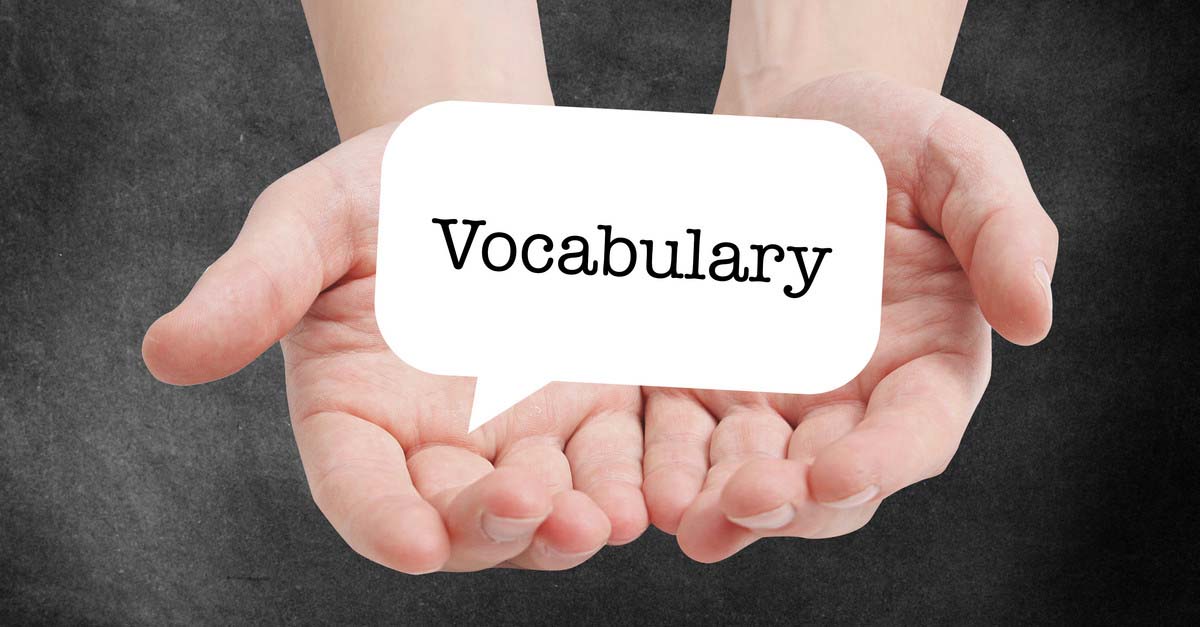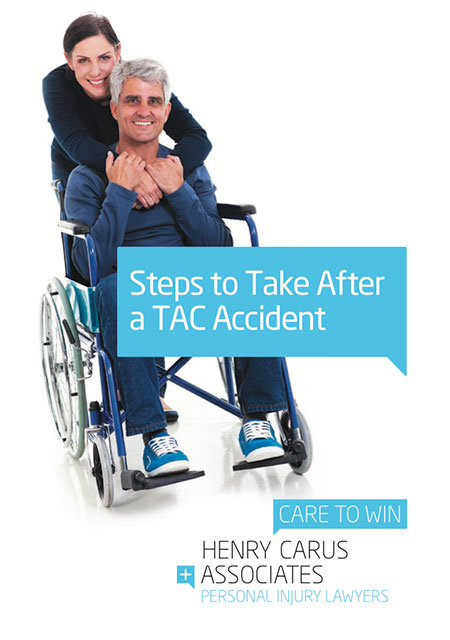
The TAC is a Victorian Government organisation whose primary role is to provide support and benefits to those injured in transport accidents.
Once you have your TAC claim accepted you become a part of the TAC world, and you are likely to come across some commonly used terms. Some of these terms you may already be aware of, others you may not.
Although as lawyers we regularly communicate with the TAC on behalf of our clients, there are often times where you, as the injured person, will communicate with the TAC directly. For this reason, we believe it is important to educate you so you are better equipped in your future interactions with the TAC.
At Henry Carus + Associates, we believe that as lawyers we have an obligation not only to act and advocate on your behalf, but to also educate you along the way.
Here are 10 terms worth looking at:
1. Transport Accident Charge –
-
- the “transport accident charge” is a premium each person pays when they register or renew their motor vehicle registration in Victoria. This amount goes directly to the TAC and is used to fund their operation, as well as providing benefits and lump sum compensation to the injured. Next time you renew your vehicle registration, look out for this!
2. Medical Excess – At one time you required to meet the costs of initial medical care up to what was referred to as the “medical excess”. Currently the excess is at $651 for accidents before 14 February 2018. After that date there is NO medical excess and TAC can start paying medical providers directly from the start. Even for those claims where the medical excess still applies, it will be waived if you were admitted to hospital as an inpatient – generally an overnight stay.
3. Benefits – the TAC are responsible to provide “benefits” to persons injured in transport accidents. These benefits are extensive and include hospital, medical, rehabilitation and household support services, medication, equipment and travel expenses.
4. No-Fault Scheme – the TAC operates as a “no fault scheme”, which means benefits can be paid to an injured person, regardless of who caused the accident.
5. Loss of Earnings (LOE) – “loss of earnings” refers to income support the TAC is required to provide people for their inability to work due to their accident injuries. Generally, the TAC will pay 80% of your pre-accident weekly earnings if you haven’t returned to work; or 85% of the gap between your pre-accident weekly earnings and your post-accident weekly earnings if you have returned to work in a reduced capacity. These benefits are payable up to 18 months after the accident.
6. Loss of Earning Capacity (LOEC) – “loss of earning capacity” are benefits payable to a person when they have lost a capacity to earn income because of their accident injuries. It is calculated as the difference between your pre-accident earning capacity and your post-accident capacity to earn income. These benefits are available for a further 18 months and kick in at the 18-month anniversary of your accident – when loss of earnings benefits cease.
7. Lump Sum Compensation – there are two kinds of “lump sum compensation” an injured person may be entitled to from the TAC – (1) an impairment benefit; and (2) common law damages. It is important to note that these payments are tax free!
8. Impairment Benefit – an “impairment benefit” is a one-off lump sum payment that can be made to an injured person if they have suffered a permanent injury, physical or psychological. The term impairment measures the extent the injuries have affected your function or movement, both physically and mentally. To be eligible for an impairment benefit your combined impairment rating must be assessed by Medical Specialists as being greater than 10%. Impairment benefits are payable to injured persons regardless of who caused the accident.
9. Common Law Damages – the purpose of “common law damages” are to compensate an injured person for the change the accident injuries have had on their life. There are two elements that must be established to be successful in a claim for common law damages – (1) you need to have suffered a “serious injury”; and (2) somebody else was at fault for causing your accident injuries. You may be entitled to an award of common law damages, even if you don’t reach the required threshold for an impairment benefit.
10. Serious Injury – a “serious injury” can be defined in a number of different ways. The legislation defines a serious injury as (1) a serious long-term impairment or loss of a body function; (b) permanent serious disfigurement; (c) severe long-term mental or severe long-term behavioural disturbance or disorder; or (d) loss of a foetus. Alternatively, if your impairment rating is assessed at 30% or more, you are automatically deemed to have suffered a serious injury. Whether you have suffered a “serious” or “severe” injury will depend on how significantly an injury has impacted upon your activities of daily living, recreational activities, ability to work or overall enjoyment of life. It is the overall change in the quality of your life that constitutes entitlement to a serious injury certificate.
We are confident that having a good understanding of the above terms will improve your overall understanding of the law and will enable you to communicate more effectively with the TAC.
As Albert Einstein once famously said, “if you can’t explain it simply, you don’t understand it well enough”. At Henry Carus + Associates we have a strong understanding of personal injury law and TAC claims – it is our job to explain it to our clients in a simple fashion, and to educate the injured.
 Call Us Today
Call Us Today



